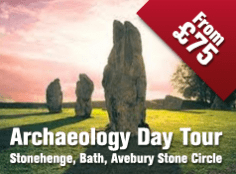It is now believed to be the first prehistoric “stone square” ever discovered – in Britain or continental Europe
One of Britain’s most famous prehistoric monuments – Avebury in Wiltshire – may be substantially more ancient than previously thought.
Investigations within the UNESCO World Heritage designated stone circle – the largest in Britain – have revealed a hitherto unknown, and probably very early, series of ancient standing stones, are arranged, not as a circle, but as a 30 metre by 30 metre square.
It is believed to be the first prehistoric “stone square” ever discovered – in Britain or continental Europe. It is conceivable that the newly discovered monument, which would have originally consisted of around 17 standing stones, was built up to a thousand years before both Stonehenge’s and Avebury’s surviving stone circles.
Read the full article in the Independent: David Keys Archaeology Correspondent.
We operate daily guided tours of Stonehenge and Avebury Stone Circle. Many going inside the inner circle. Join us on guided tour with our expert guides and learn more about this amazing discovery.
Stonehenge Guided Tours
The Megalithic Experts
Est. 1995


